Many thanks to SWLing Post contributor, Mario Filippi (N2HUN), for the following guest post:
International Radio Broadcasts via Satellite
by Mario Filippi
I find your SWLing Post blog a constant fountain of information on the world of shortwave listening. Having been a shortwave listener since the early 1960’s, I’ve depended mainly on shortwave radios to hear foreign broadcasts. I’ve owned more shortwave radios than shoes (hi hi)–! However, there is a not-so-well known way of receiving radio broadcasts from around the world, and this is by Free To Air Satellite (FTA).
Free To Air satellite reception requires using a minimum 30 inch Ku band satellite dish, an LNB (Low Noise Block) amplifier, a Free To Air satellite receiver, and skills to aim at a satellite carrying these broadcasts.
There are several Free To Air satellites in the Clarke Belt, and the reception is cost-free as these broadcasts are for expatriates living around the world who need to tune in to stations back home. One satellite in particular that carries many foreign radio broadcasts is Galaxy 19, located at a longitude of 97 degrees, and is readily accessible from the USA.
Now let’s start on what an FTA dish set-up looks like for this type of reception. Below is an installation of mine, consisting of a 30 inch WS International satellite dish and LNB. A 30 foot length of RG/6 coax is run into the shack and hooked to an AMIKO Mini HD SE FTA receiver. Typical cost for a dish, LNB, coax is under $200.
Below is my AMIKO Mini HD SE FTA receiver, also known as an STB (Set Top Box), which can be purchased from a number of FTA vendors. This allows one to receive international television and radio broadcasts. They run about $90.
As stated earlier, Galaxy 19 is one of the best satellites to use for international radio broadcasts–currently, it has about 90 radio channels available for listening. I did a scan today of what is available, and below are three screenshots of the stations available to the listener.
Duna World radio is from Hungary. IRIB stands for Islamic Republic of Iran Broadcasting. 3 ABN is Apostolic Bible Network. TGN is Thai Global Network.
Kuwait, Syria, and the Middle East are well represented by the radio stations above. Voice of Russia, and Congo radio are good ones.
Voice of Turkey, Polski Radio found above. Not too shabby!
[Y]ou’ll find a good how-to on FTA at the following link:
http://www.packratvhf.com/Conference/uW_Satellites.pdf
[T]his is just a little introduction to the world of international listening using satellite. I hope this is something you and SWLing Post readers might find interesting.
Indeed I do, Mario! Thanks so much for taking the time to show us how to tune in a variety of international broadcasters via satellite. Each year at the Winter SWL Fest, we have demonstrations showing what can be done via FTA satellite. Perhaps I should bite the bullet and invest in one!

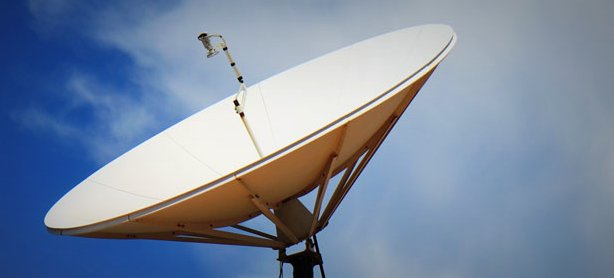
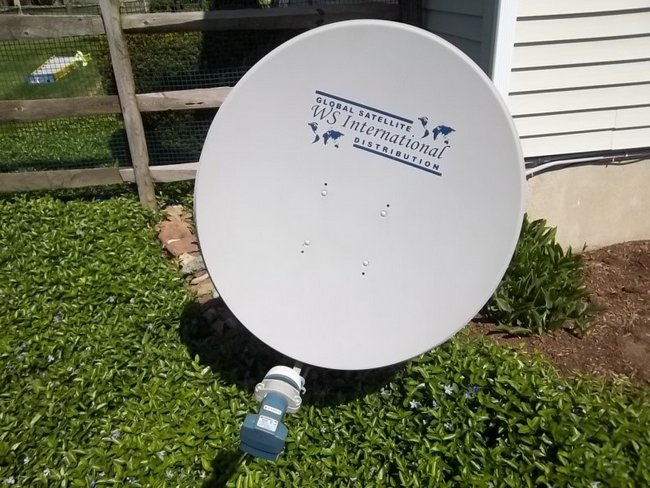

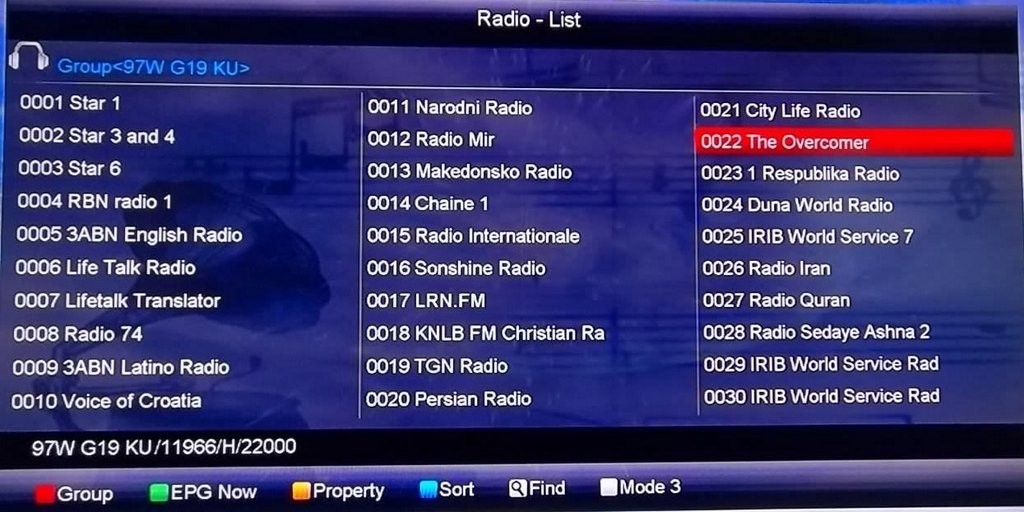
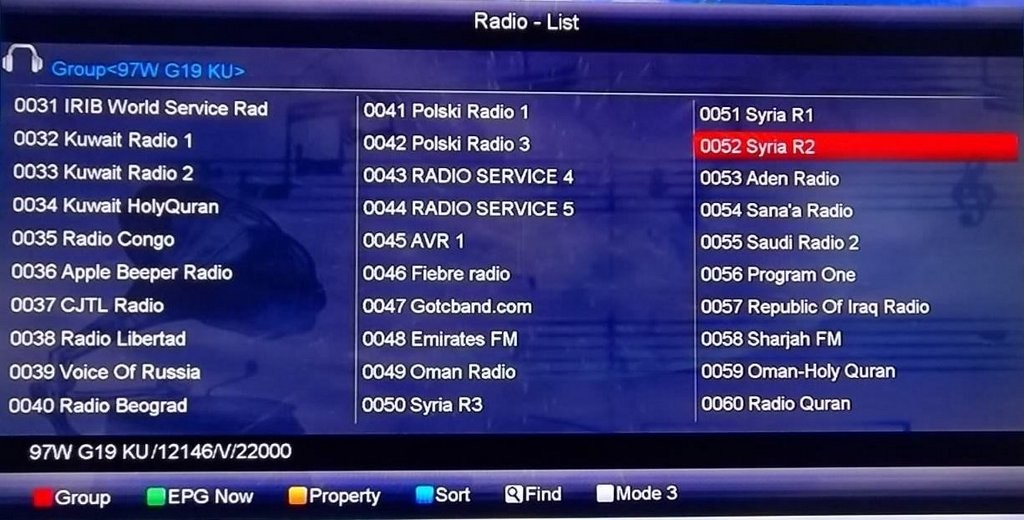
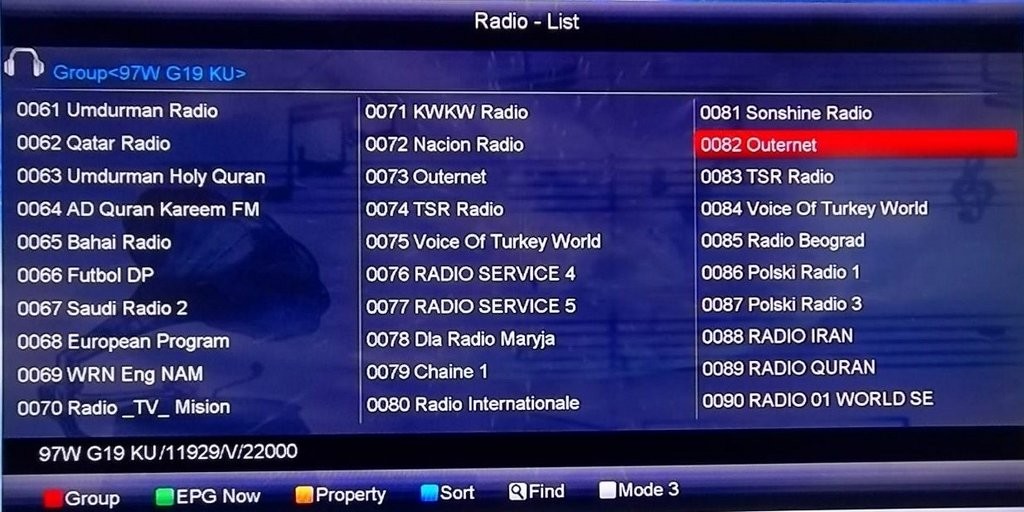
40 Radio channels.
Broadcaster: All India Radio (AIR)
Satellite: G-Sat 15 ( 95 Degree East)
Glad to hear it Robert, with the winter coming on, you’ll have many hours of entertainment 24/7 on FTA satellite.
Since this post and reading some other things from Mario and Ken Ritz at The Spectrum Monitor I have taken the plunge. While I am still tweaking things a bit (meaning I am only getting a few satellites right now but close to getting more) I am having a blast watching and listening. I love anything which can be captured coming through the air, and this stuff is great!
All current FTA satellites are geostationary to my knowledge.
A minimum of 30 inch dish is needed for adequate reception. Some folks have tried smaller dishes, e.g. re-purposed pay-satellite dishes, and they have received a few stations with strong transponders.
Good point about rain fade; Ku band suffers from this, but drizzle and light rain don’t seem to be a problem. C band does not suffer from rain fade though. For C band you’d need a minimum of an 8 foot dish for satisfactory results.
Another FTA satellite with a good number of radio stations is Hispasat at 30W, serving Cuba, S. America, and the Middle East. SWLs and BCB DXers who are familiar with Radio Reloj (Radio Clock) from Havana, Cuba can find it on Hispasat’s radio list loud and clear. Once in a while I can hear it on the AM broadcast band here on the East Coast USA.
Neat, I’d never heard about that service.
A couple quick questions:
I infer that the satellites we are discussing here are in ‘fixed’ geosynchronous orbit, so once located, the antenna shouldn’t have to move, correct?
As for the receiver, would something like a ‘COTS’ (Common Off The Shelf) SDR work in place of the FTA dedicated-purpose receivers discussed here? (Suspect the frequencies involved exceed COTS SDR capabilities)
About antenna size – could a satellite TV anyenna be repurposed with new electronics, or are 30″ dishes so affordable no one really bothers with the 18″ TV dishes?
Great article, thanks for sharing!
I’ve had an FTA system for 10 years, and it’s a blast. In addition to all of the radio, there’s a ton of International TV channels as well — mostly Middle East and SE Asian, but still a great list (and as others will tell you, do not expect miracles or a replacement for cable or sports programming. Expect a lot of regional soccer.)
A few answers:
– Yes, if you set the dish once you can forget it — provided you just want to catch 97 West, the main International satellite. You will need to have a clear, unobstructed view of the Southern sky.
– As of now I don’t think that an SDR will do the entire job. Here’s some info:
https://www.reddit.com/r/RTLSDR/comments/2g3dib/fta_satellite_tv/
That said, satellite receivers have come way down in price. I purchased a simple one for under $50, HDTV friendly and all.
– For FTA, you will need a minimum 30″ dish. You might catch stronger signals on a smaller dish, but the moment it rains the signal will be gone.
For free radio only, which is what this post is about.
http://www.lyngsat.com/freeradio/index.html
73 de Kris
May I bring to your readers attention a most excellent website
http://www.lyngsat.com/
if it’s being downlinked lyngsat will list it, and more..!
Here in Europe the popular ASTRA TV sateillites also carry many radio programs. See http://www.astra.de/724585/digital-free-radio-192-name.pdf.